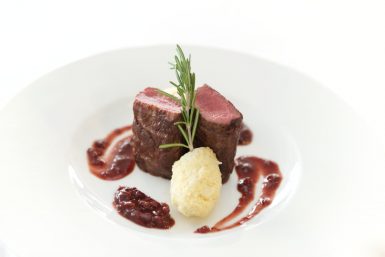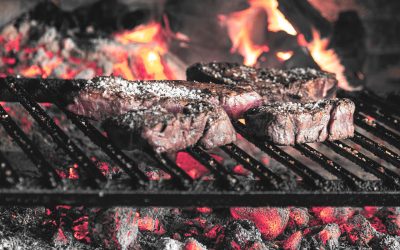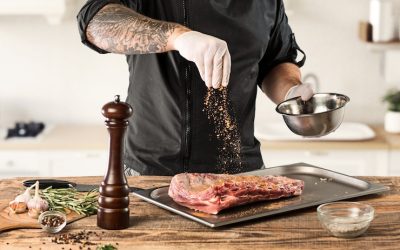Steamed meat does not taste good. Only from seasoned beef, with its nutty, buttery flavor and delicate consistency, a chef will prepare delicate steaks that taste impossible to forget.
Which aging – dry or wet – makes the flavor more perfect has become a topic of discussion in certain gourmet circles. Dry aging has an age-old tradition; wet aging is a relatively recent phenomenon.
All meats benefit from some aging. After slaughtering, enzymes act on the connective tissue and muscle fibers, destroying them and making them more tender. Chicken is seasoned for 2-3 days, pork and lamb – 7-10 days. Beef can mature for up to 40 days.
Dry ripening
For this fermentation, whole beef carcasses or large cuts are hung outdoors at just above freezing and left to mature for several weeks. During this time, not only do enzymes work in the muscle tissues, but the meat slowly dehydrates (evaporates moisture). This enhances the basic flavor of the beef and changes its texture.
The disadvantage is that there is a loss of moisture, which consequently reduces the weight of the carcass and increases its cost.
The surface takes on an unappetizing brownish color, so the cut is cleaned before sale, which also reduces the original weight.
Wet ripening
This is a relatively recent method, which became possible with the advent of safe plastic and the development of vacuum storage methods. In this process, pieces of beef are hermetically sealed and shipped to consumers. Fermentation occurs within 4 to 10 days from slaughter to sale.
The enzymes in the packed beef’s own juice will break down the fibers and make it more tender. However, because there will be no loss of liquid, there will not be the concentration of flavor that comes from dry curing.
The biggest advantage of this operation is that the meat does not lose weight due to dehydration.
Wet fermentation also costs the producer less because carcasses do not need to be stored in certain conditions and constantly monitored, which ultimately results in lower consumer costs.
Which is better?
The biggest difference between the two types of meat is the taste . Dry-aged beef develops a rich, buttery, nutty flavor, while foodies note a slightly metallic taste after wet-ripening without the same depth of flavor.
Unless the beef has been specifically labeled as dry-aged, the meat sold in the store has almost certainly been wet-fermented. Most of us are used to associating the taste of beef with a wet-aged product. Only Michelin-level restaurants buy dry-aged meat. Most premium establishments age the cut in special rooms lined with Himalayan salt bricks.
Still, it’s worth trying dry-aged beef at least once to get an idea of how it tastes when it’s aged. It costs a lot more and is harder to find, but it’s worth the experiment!
Recent Posts
- Dress for Success: What to Wear to Ruth’s Chris Steak House
- What is the history of the origin of the steak. The dish comes from antiquity as it has changed over time
- Aussie Beefsteak: Cooking with Vegas Online Casino Star
- How to Write an Essay About the Deliciousness of Steak
- Meat for steaks: basic rules for choosing
About Beef Steak House

Beef Steak House is a legendary establishment of the famous international chain. This real man’s materia has become a kind of Mecca for fans and connoisseurs of American marbled beef steaks.

